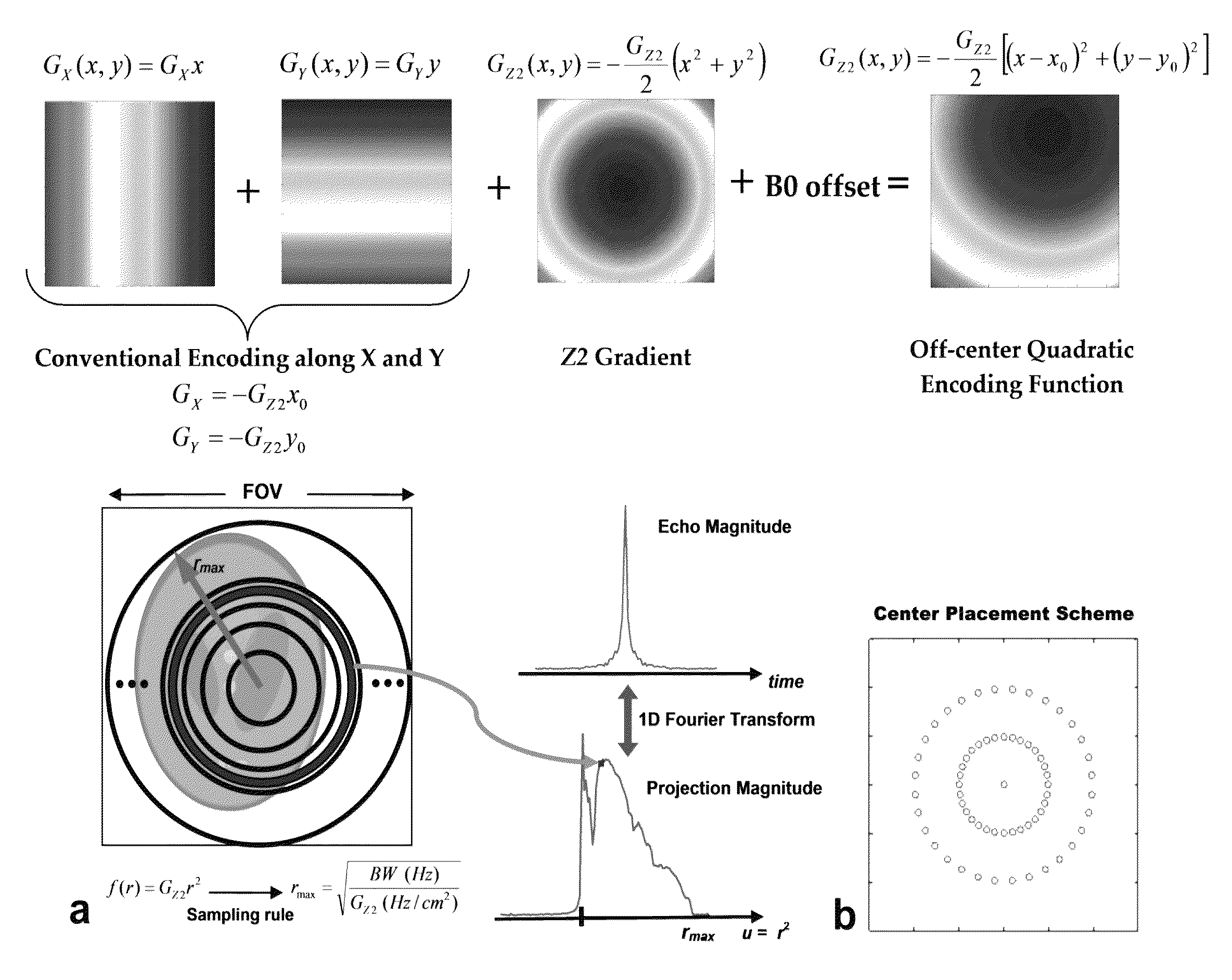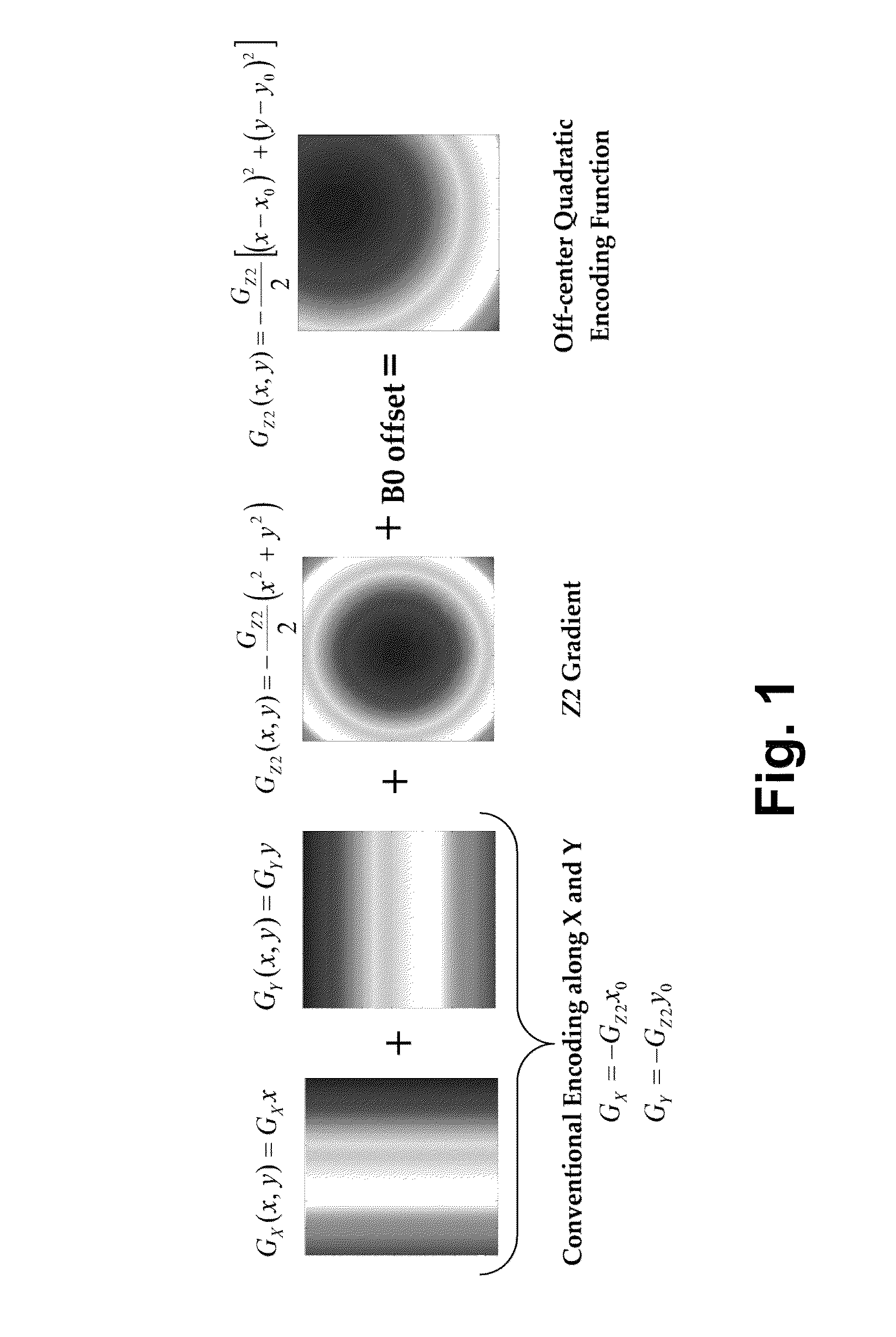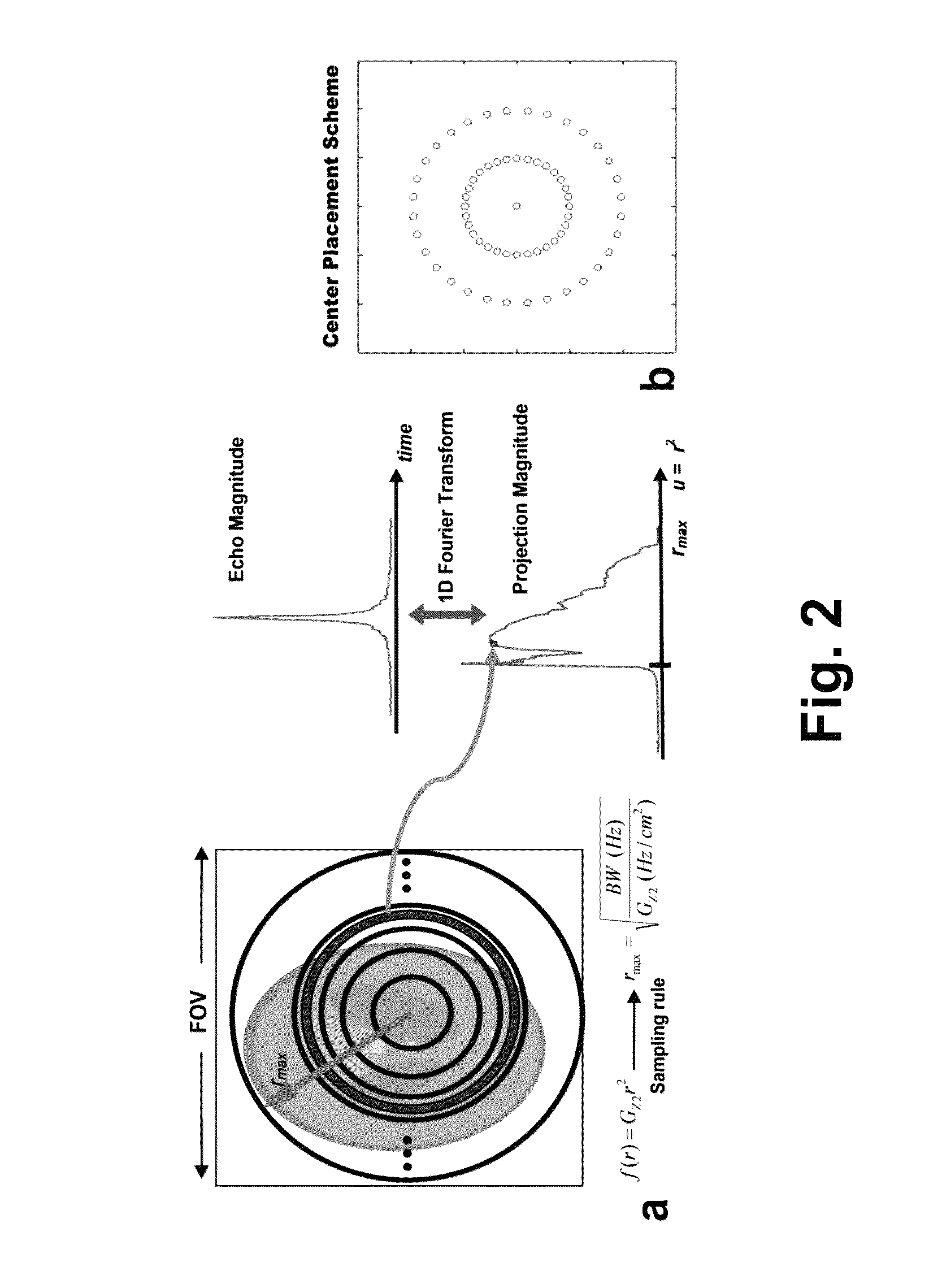O-space imaging: highly efficient parallel imaging using complementary nonlinear encoding gradient fields and receive coil geometries
a gradient field and gradient imaging technology, applied in the field of parallel imaging methods and systems, can solve the problems of increasing the ratio of acceleration gain to expense of multiple receiver chains, reducing etc., and achieves the effects of reducing coil coupling, reducing aliasing, and reducing the gain from increasing the number of coils
- Summary
- Abstract
- Description
- Claims
- Application Information
AI Technical Summary
Benefits of technology
Problems solved by technology
Method used
Image
Examples
Embodiment Construction
[0028]In the O-Space approach of this invention, parallel imaging performance is optimized using linear combinations of multiple spherical harmonics to form gradient shapes tailored to the spatial information contained in the coil profiles (15). In principle, arbitrary gradient shapes can be chosen for each successive echo to obtain different projections of the object. In its most general form, one begins with an array of surface coil profiles, assesses their spatial encoding ability, and then designs a nonlinear gradient encoding scheme that is maximally complementary to the coil array. In a typical circumferential coil array, the profiles vary smoothly throughout the FOV, but the regions of peak sensitivity are relatively localized in angular regions near each coil. A circumferential array therefore provides more encoding in the angular direction than in the radial direction, a fact that has not been exploited by gradient encoding schemes in the past.
[0029]According to an embodime...
PUM
 Login to View More
Login to View More Abstract
Description
Claims
Application Information
 Login to View More
Login to View More - R&D
- Intellectual Property
- Life Sciences
- Materials
- Tech Scout
- Unparalleled Data Quality
- Higher Quality Content
- 60% Fewer Hallucinations
Browse by: Latest US Patents, China's latest patents, Technical Efficacy Thesaurus, Application Domain, Technology Topic, Popular Technical Reports.
© 2025 PatSnap. All rights reserved.Legal|Privacy policy|Modern Slavery Act Transparency Statement|Sitemap|About US| Contact US: help@patsnap.com



